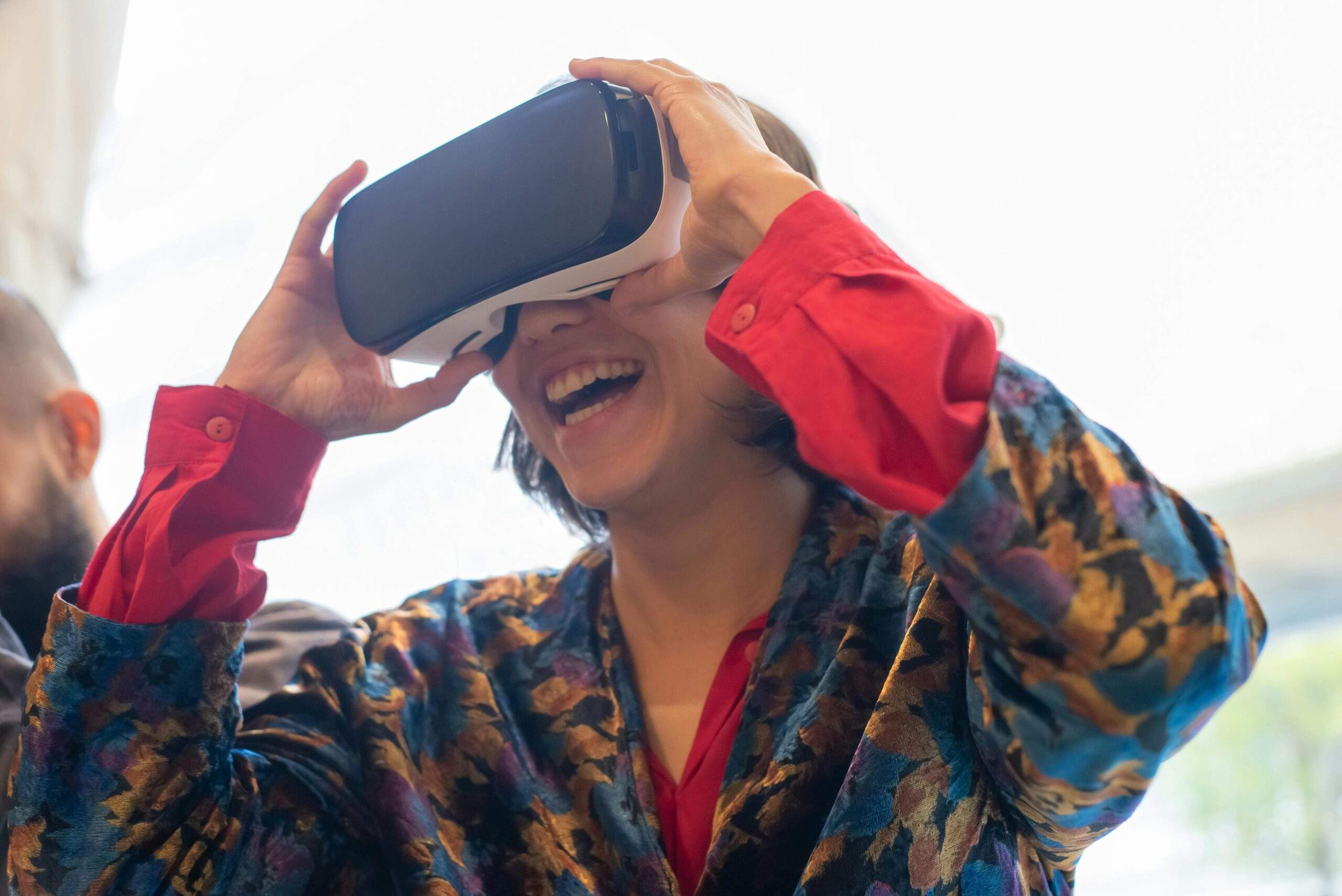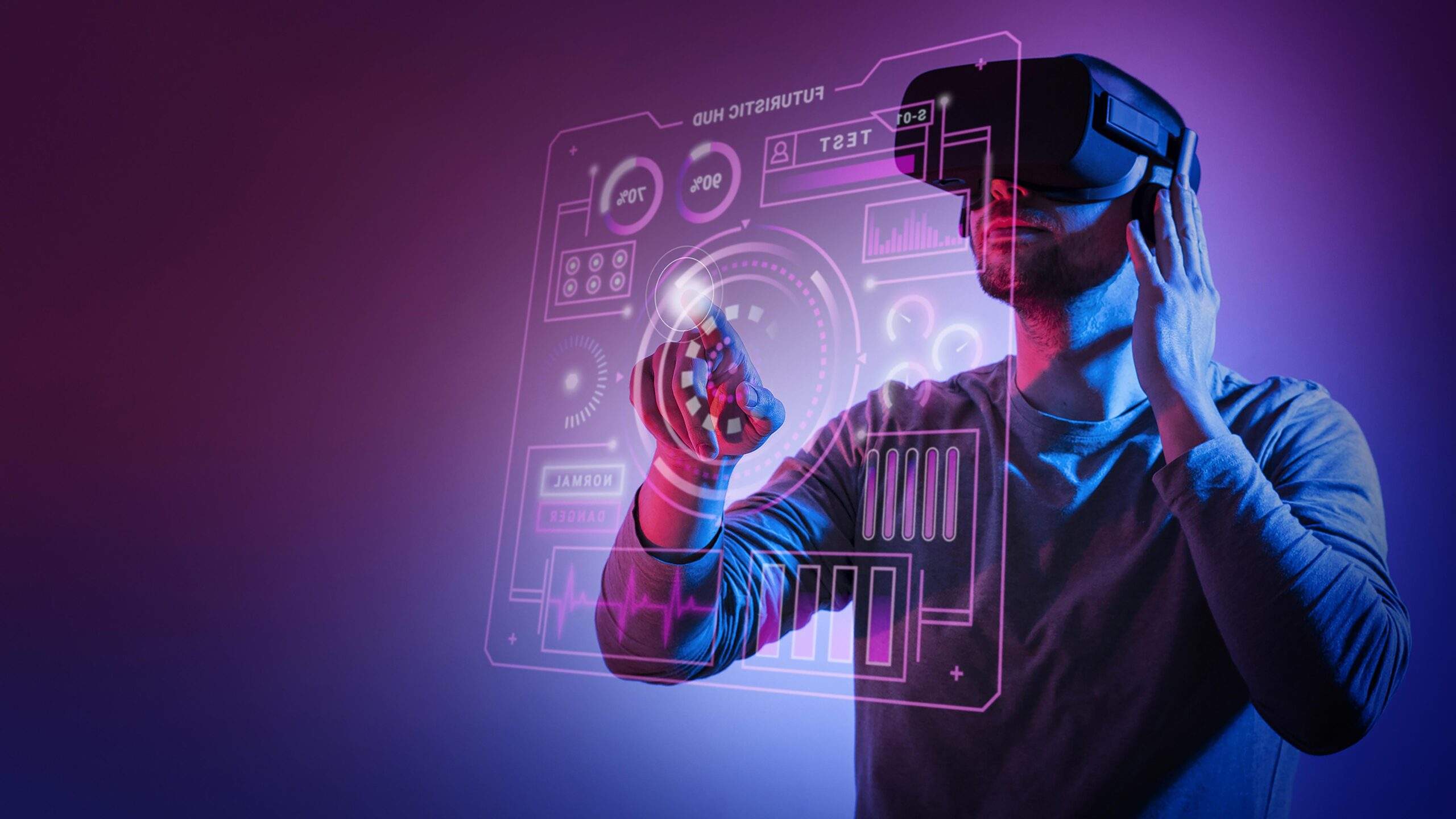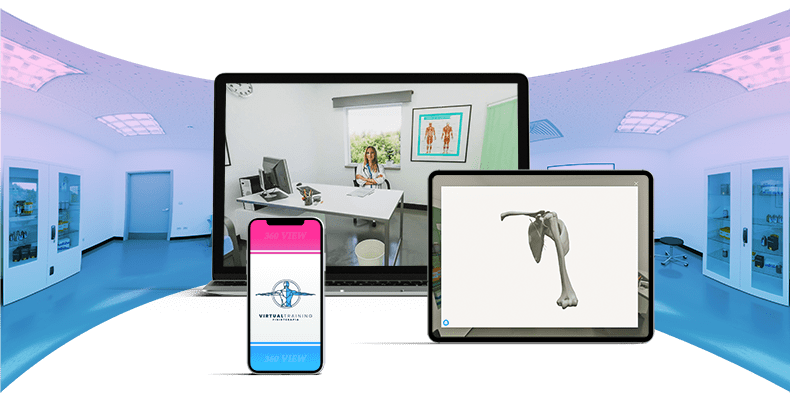Augmented reality and virtual reality are technologies that enhance learning, but currently their teaching potential is not yet fully exploited. In other blog articles we have explored their application in corporate education, and how they can be used to create environments in which to take classes and interact with teachers. In this space, however, we are going to examine the potential that immersive technologies have in the classroom and the benefits that students gain.
THE POSITIVE IMPACT ON LEARNING
Traditional teaching methods can be complemented by the teaching tools offered by AR and VR technologies, generating a new way of explaining topics, and for students, an innovative opportunity for participation. In fact, with the use of augmented reality and virtual reality, pupils are not mere spectators of the lesson, but have an active role, as they can participate with practical and experimental activities with a playful nature. Thanks to this engaging, stimulating and immersive nature of teaching, learning and memorization benefits are achieved. In fact, students, being intrigued and entertained, are more likely to acquire, understand and remember information.
New technologies in schools not only enhance the learning experience, but also educate students in the use of the technologies themselves. Our society, and the society that today’s young students will experience, is increasingly digitized, and it is important that children acquire quality digital skills by becoming familiar with new media.
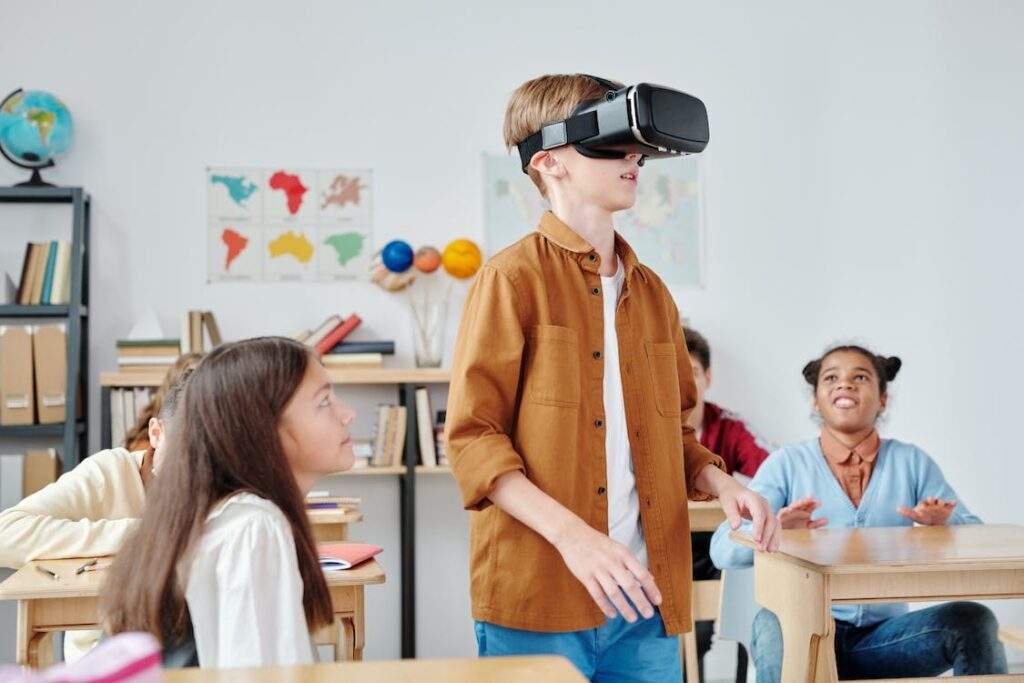
Source: Pexels
NEW IMMERSIVE TECHNOLOGIES IN SCHOOLS
But then, how can augmented reality and virtual reality be used in schools? The possible applications in education are many, and they can be more or less immersive and used for different educational purposes
Crossing the boundaries of schoolbooks with augmented reality
Augmented reality allows digital components, such as images, movies, text, and 3-D models to be superimposed on real-world elements. This technology can be integrated within school books. Imagine, for example, having to explain difficult-to-imagine or composite scientific concepts, such as the human body or cells: thanks to augmented reality, students can frame the image printed in the book or a qr code, and view a 3d reproduction of the cell with which they can interact, reading explanations of each component. Or imagine an art book: students can take a 360-degree look at a statue and not just study a static printed picture. AR creates a new way of storytelling and makes accessible hidden layers that students can explore independently by interacting with digital elements.
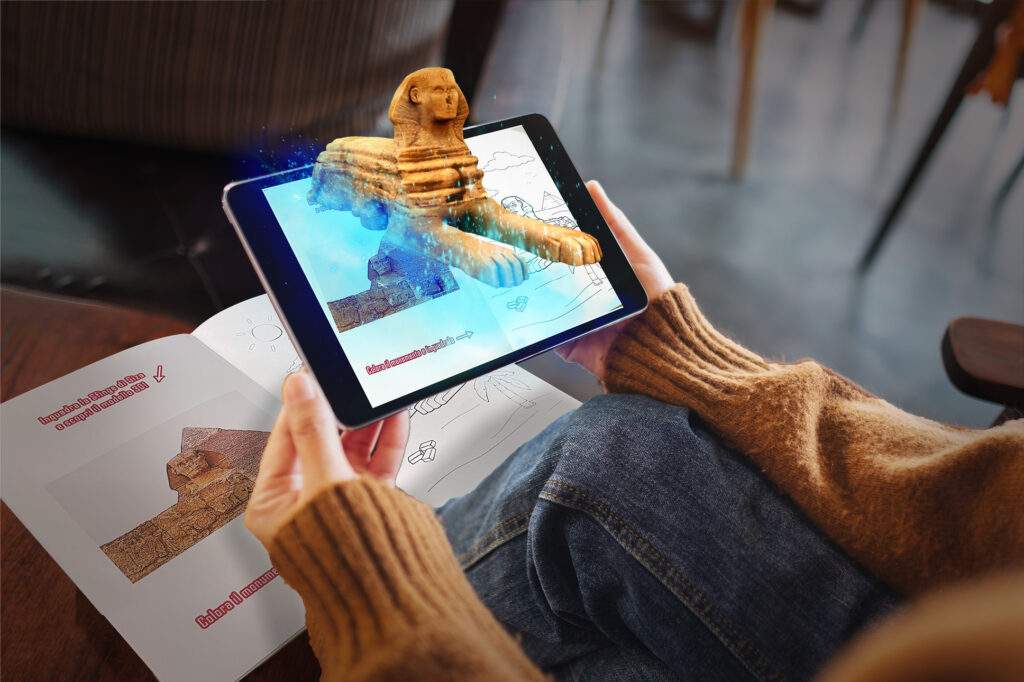
Immerse yourself in history with 360° virtual environments
Also highly effective is the didactics involving the use of Virtual 360°, interactive and navigable 360° spaces in which tours and immersive experiences can be made. These are multi-device digital environments accessible by pc, tablet, phone or even with VR viewers, cardboards and sensors. To teach history, pupils can be teleported into the past, meet historical figures with whom they can interact and be told trivia and events, can explore cities by entering buildings, and immerse themselves in the culture of the time.
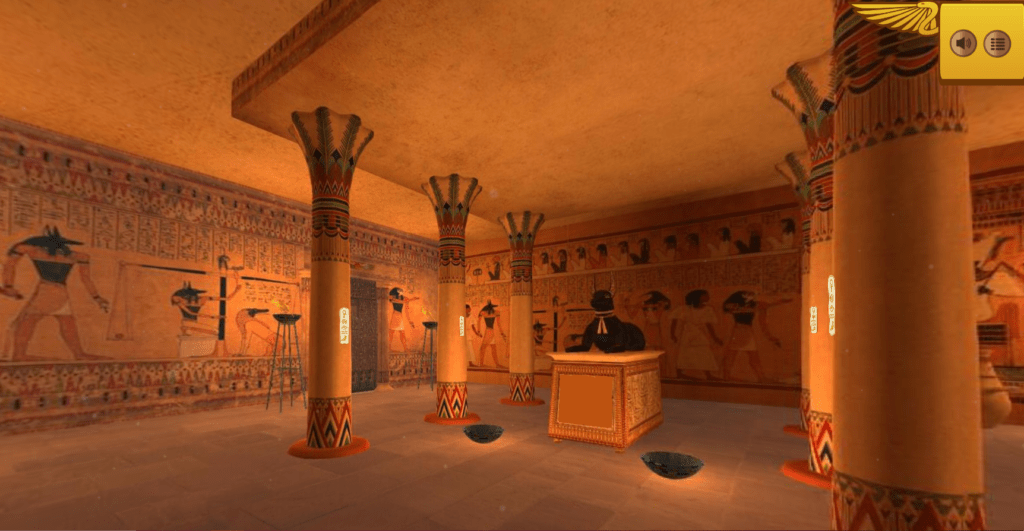
Gamification and learning
These innovative technological tools for education introduce a logic of gamification within classrooms, making it possible to learn by playing. Scavenger hunts composed of quizzes and puzzles can be conducted in virtual worlds, encouraging students to be active in gathering information and then measuring their acquired knowledge through tests.
Challenges
To date, the use of immersive technologies in the Italian schools is still limited to a few examples. At AR Market we believe in the great benefits that these technologies bring to students and for this reason we aim to spread them, collaborating with schools and developing educational virtual experiences.


